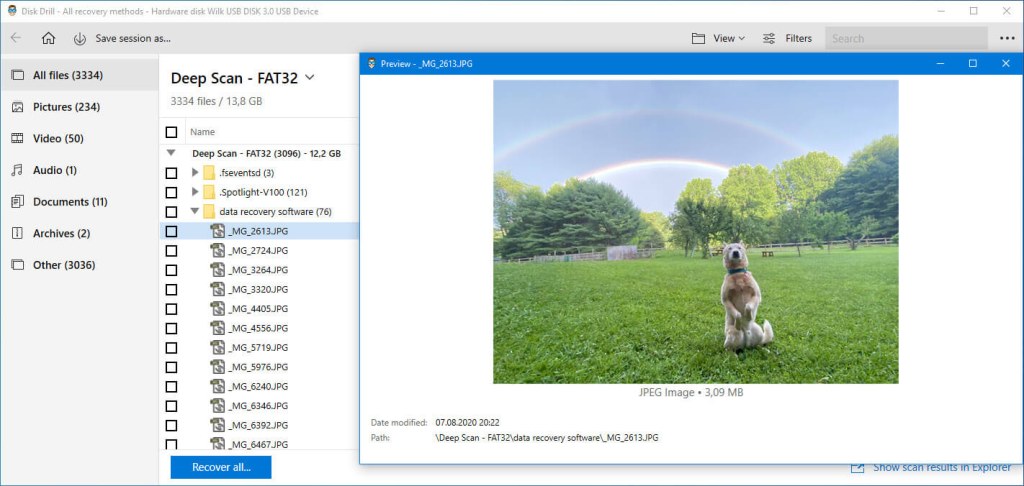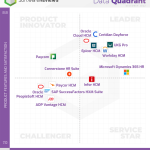The Ultimate Guide: Unveiling The Best Data Recovery Software Reviews 2022 – Discover The Perfect Solution Now!
Data Recovery Software Reviews 2022
Introduction
Dear Readers,
1 Picture Gallery: The Ultimate Guide: Unveiling The Best Data Recovery Software Reviews 2022 – Discover The Perfect Solution Now!

Welcome to our comprehensive review of data recovery software for the year 2022. In this article, we will delve into the world of data recovery and provide you with valuable insights and information on the best software available in the market. Whether you have accidentally deleted important files, experienced a system crash, or encountered a virus attack, our reviews will help you select the right software to recover your precious data.

Image Source: cleverfiles.com
Nowadays, data loss has become a common issue due to various reasons, and having reliable data recovery software is essential. With numerous options available, it can be overwhelming to choose the most suitable one for your needs. Our aim is to simplify this process by providing you with in-depth reviews, highlighting the key features, pros, and cons of each software, ultimately assisting you in making an informed decision.
So, let’s dive into the world of data recovery software reviews for 2022 and find the best solution to recover your lost data!
Table of Contents
1. What is Data Recovery Software?
2. Who Can Benefit from Data Recovery Software?
3. When Should You Use Data Recovery Software?
4. Where Can You Find Data Recovery Software?
5. Why Should You Use Data Recovery Software?
6. How Does Data Recovery Software Work?
7. Advantages and Disadvantages of Data Recovery Software
8. Frequently Asked Questions (FAQ) about Data Recovery Software
9. Conclusion
10. Final Remarks
What is Data Recovery Software?
Data recovery software is a specialized program designed to retrieve lost, deleted, or inaccessible data from various storage devices. It employs advanced algorithms to scan the storage medium and recover files, including documents, photos, videos, and more. This software can be a lifesaver in situations where data is accidentally deleted, lost due to hardware failure, or corrupted by malware.
Using data recovery software, you can restore your important files and folders, ensuring that no valuable information is permanently lost. It provides a convenient and efficient solution to recover data without the need for expensive professional services.
It’s important to note that data recovery software is not a guaranteed solution for all data loss scenarios. In some cases, physical damage to the storage device may require specialized hardware recovery services. However, for most common data loss situations, data recovery software offers a reliable and cost-effective option.
Who Can Benefit from Data Recovery Software?
Data recovery software is beneficial for a wide range of individuals and organizations. Here are a few examples of who can benefit from using data recovery software:
1. Individuals who have accidentally deleted important files or formatted their storage devices.
2. Businesses that need to recover critical data from servers or workstations.
3. Photographers and videographers who have lost their media files due to memory card corruption or accidental deletion.
4. Students who have lost their assignments or important documents.
5. IT professionals who want to provide data recovery services to their clients.
Regardless of your background or profession, if you have experienced data loss, data recovery software can be a valuable tool in retrieving your precious information.
When Should You Use Data Recovery Software?
There are several scenarios in which you may consider using data recovery software:
1. Accidental Deletion: If you have unintentionally deleted important files, data recovery software can help you recover them.
2. System Crash: In the event of a system crash or software failure, data recovery software can retrieve your data from the affected storage device.
3. Hardware Failure: When a storage device fails due to physical damage or malfunction, data recovery software can attempt to retrieve the data before seeking professional assistance.
4. Virus or Malware Attack: If your files have been encrypted or corrupted by a virus or malware attack, data recovery software can assist in recovering the unaffected files.
5. Formatting or Partitioning: If you have accidentally formatted a storage device or partitioned it, data recovery software can help restore the lost data.
It is important to note that the success of data recovery depends on various factors, such as the extent of damage, the type of storage device, and the software used. In some cases, it may not be possible to recover all data, especially if it has been overwritten or damaged beyond repair.
Where Can You Find Data Recovery Software?
Data recovery software is widely available and can be found through various channels:
1. Official Websites: Most data recovery software providers have official websites where you can download their software directly.
2. Software Marketplaces: Platforms like the Apple App Store, Google Play Store, and Microsoft Store offer a wide range of data recovery software options.
3. Third-Party Websites: There are reputable third-party websites that provide reviews, comparisons, and download links for different data recovery software.
When downloading data recovery software, it is important to ensure that you are obtaining it from a trusted source to avoid malware or counterfeit versions that may harm your system or compromise your data security.
Why Should You Use Data Recovery Software?
Data recovery software offers several benefits that make it a valuable tool for individuals and businesses:
1. Cost-Effective: Data recovery software is an affordable solution compared to seeking professional data recovery services, which can be expensive.
2. Convenience: With data recovery software, you can recover your lost data at your own convenience without relying on external services or support.
3. Time-Saving: Instead of manually searching for and recreating lost files, data recovery software automates the process, saving you time and effort.
4. Wide Compatibility: Data recovery software supports various storage devices, including hard drives, solid-state drives (SSDs), memory cards, USB drives, and more.
5. User-Friendly: Most data recovery software comes with intuitive interfaces and user-friendly features, making it accessible to individuals without technical expertise.
By utilizing data recovery software, you can regain control over your data and minimize the impact of data loss on your personal or professional life.
How Does Data Recovery Software Work?
Data recovery software follows a systematic process to retrieve lost or deleted data:
1. Scanning: The software scans the selected storage device, searching for traces of lost or deleted files.
2. File Analysis: During the scanning process, the software identifies the file types and their metadata to facilitate accurate recovery.
3. Preview: Many data recovery software tools provide a preview feature, allowing you to view the recoverable files before proceeding with the actual recovery process.
4. Recovery: Once the preview is complete and you have verified the files you wish to recover, the software proceeds with the recovery process, restoring the selected files to a specified location.
It is essential to note that the success of data recovery depends on various factors, including the condition of the storage device, the file system used, and the type of data loss. In some cases, the software may be unable to recover all files, especially if they have been overwritten or damaged beyond repair.
Advantages and Disadvantages of Data Recovery Software
Like any technology, data recovery software has its advantages and disadvantages. Let’s explore both sides:
Advantages:
1. Cost-Effective: Data recovery software is a more affordable option compared to professional data recovery services.
2. Accessibility: Data recovery software can be used by individuals without technical expertise, making it accessible to a wide range of users.
3. Time-Saving: Using data recovery software saves time by automating the recovery process, eliminating the need for manual file search and recreation.
4. Versatility: Data recovery software supports various storage devices and file systems, providing flexibility in recovering different types of data.
5. Personal Control: By using data recovery software, you have control over the recovery process and can decide which files to recover and where to save them.
Disadvantages:
1. Limitations: Data recovery software may not be able to recover all files, especially in cases of severe physical damage or extensive file corruption.
2. Overwriting: If data has been overwritten or fragmented, it becomes more challenging to recover the original files completely.
3. Learning Curve: While most data recovery software is user-friendly, some advanced features may require some technical understanding.
4. Security Risks: Using data recovery software from untrusted sources may expose your data to potential security risks or malware.
Frequently Asked Questions (FAQ) about Data Recovery Software
1. Can data recovery software recover files from a formatted hard drive?
Yes, data recovery software can often recover files from a formatted hard drive. However, the success of recovery depends on several factors, such as the extent of formatting, subsequent data overwriting, and the specific software used.
2. How long does data recovery software take?
The time taken by data recovery software varies depending on factors such as the size of the storage device, the type of file system, and the complexity of the data loss scenario. It can range from a few minutes to several hours.
3. Can data recovery software retrieve data from a physically damaged storage device?
Data recovery software may be able to retrieve data from a physically damaged storage device to some extent. However, severe physical damage often requires professional intervention and specialized hardware recovery services.
4. Is data recovery software safe to use?
Data recovery software obtained from trusted sources is generally safe to use. However, it is essential to be cautious when downloading software from unknown or unverified websites, as it may contain malware or compromise your data security.
5. Can data recovery software recover deleted emails or messages?
Yes, data recovery software can often recover deleted emails or messages from email clients, messaging apps, and other communication platforms. However, the success of recovery depends on various factors, such as the email client used, the storage location, and the time elapsed since deletion.
Conclusion
Dear Readers,
Thank you for joining us on this journey through the world of data recovery software reviews for 2022. We have explored the importance of data recovery software, its benefits, and how it can be a lifesaver in various data loss scenarios. Our comprehensive review has provided you with valuable insights into the top software options available in the market.
Remember, data loss can happen to anyone at any time, and having reliable data recovery software can make a significant difference in minimizing the impact of such incidents. Whether you are an individual, a business, or a professional, selecting the right data recovery software is crucial.
We hope that our review has helped you make an informed decision and find the best data recovery software for your needs. Don’t let data loss define your future; take control and recover your precious information!
Final Remarks
Dear Readers,
Data recovery software is an invaluable tool in today’s digital world, where data loss can have severe consequences. While it provides a cost-effective and convenient solution, it is essential to understand its limitations and the factors that affect successful data recovery.
Always remember to back up your important files regularly to minimize the risk of data loss. Prevention is the best defense against data loss, and having multiple backups ensures that your data is safe even in the face of unexpected events.
Lastly, we recommend using data recovery software from trusted sources and maintaining a proactive approach to data security. Regularly update your software, use reliable antivirus programs, and practice safe browsing habits to minimize the chances of data loss due to malware or cyberattacks.
Thank you for joining us on this data recovery software review journey. We wish you a smooth and successful data recovery experience!
This post topic: Software Reviews


